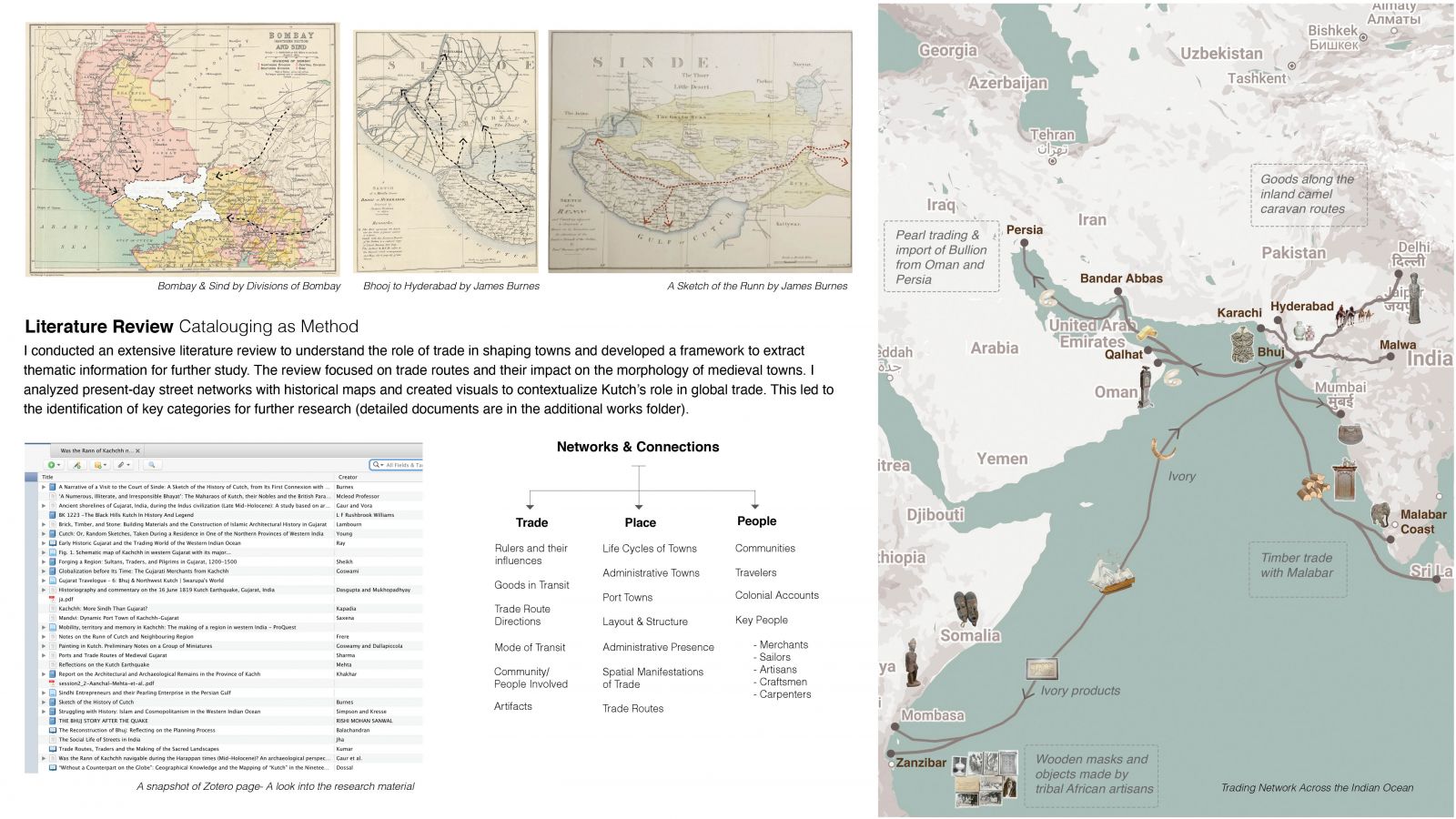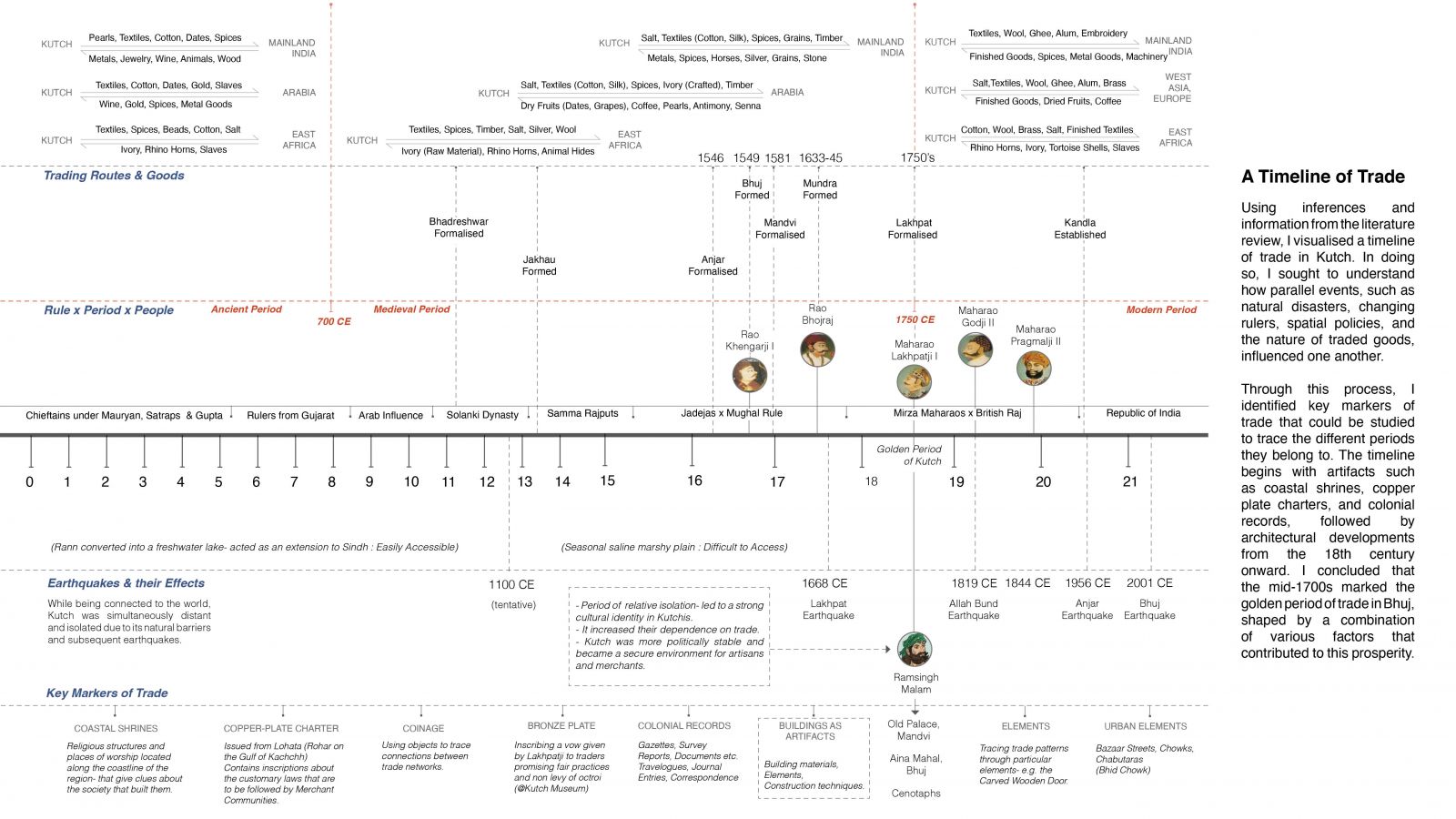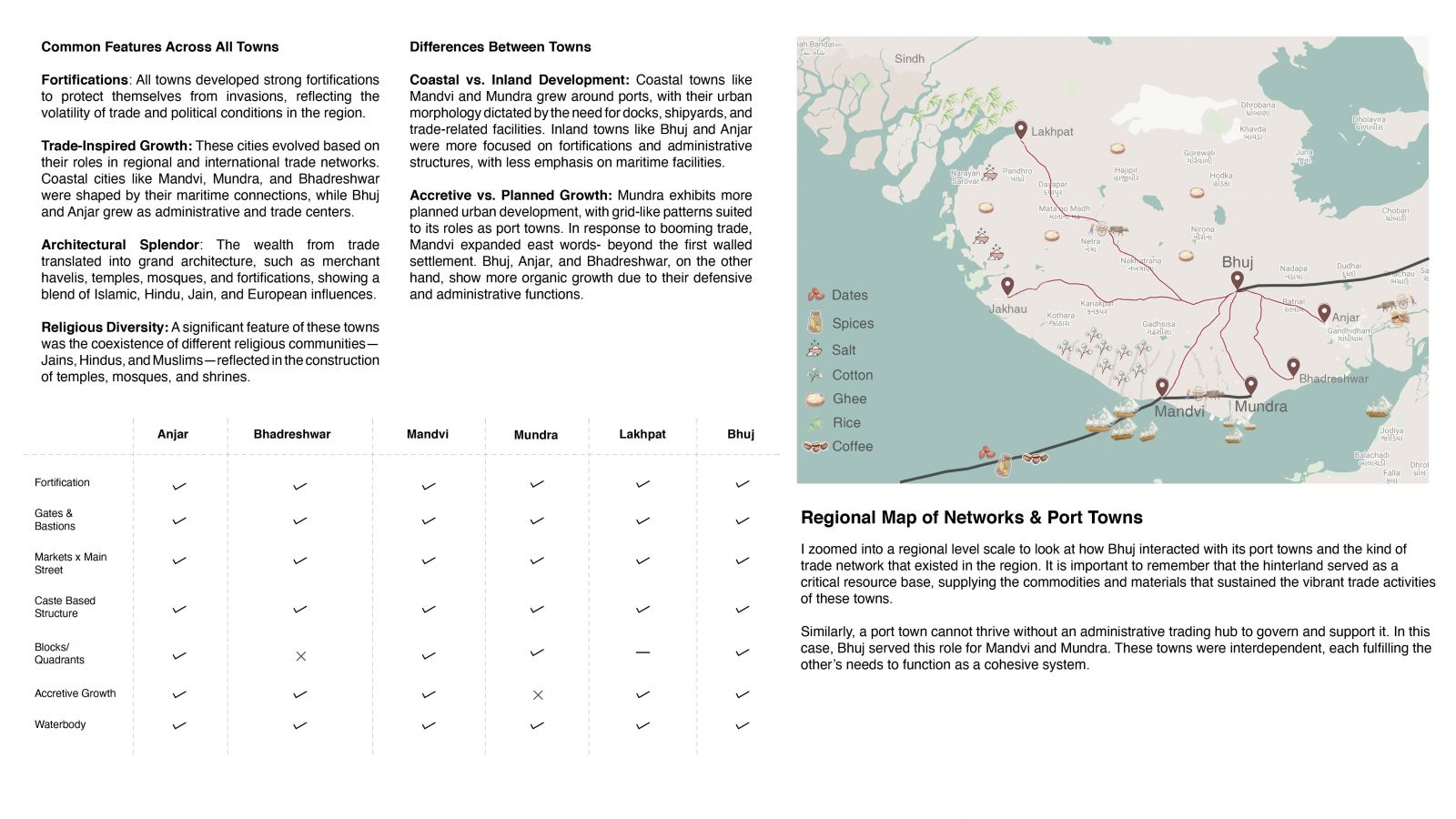Your browser is out-of-date!
For a richer surfing experience on our website, please update your browser. Update my browser now!
For a richer surfing experience on our website, please update your browser. Update my browser now!
This research explores the transformative impact of trade on the architecture and urban form of Kutch’s prominent trading towns—Bhuj, Mandvi, and Mundra with a focus on the mid-18th to late 19th centuries. Situated at the crossroads of the Indian Ocean trade network, these towns served as interconnected nodes of commerce and cultural exchange. Through the study of structures on primary streets like trader residences, warehouses, rest houses, and administrative structures, the project uncovers how trade shaped their spatial organisation, social hierarchies, and economic dynamics. The findings emphasise the enduring legacy of trade in shaping Kutch’s built environment and cultural identity.
View Additional Work








